Chicago Knee Deep
Making Room for Water Resiliency in Chicago
University of Illinois at Chicago
Master of City Design Spring 2022 Studio



Making Room for Water Resiliency in Chicago
University of Illinois at Chicago
Master of City Design Spring 2022 Studio



The Master of City Design Spring Studio focused on ecological design for cloudburst flooding. Planning for cloudburst events is a new concept, which has typically been addressed through special area plans, systems thinking, and blue-green infrastructural interventions. Some resiliency plans have incorporated ideas related to flash flooding, but the acceptance of cloudburst flooding has become increasingly important as torrential rain events across the globe continue to occur with increased frequency and ferocity. Chicago Knee Deep: A Vision for Water Resiliency reimagines the near southside of Chicago including Grant Park, the Amtrak Rail Yards, The 78 site, Northerly Island, the Museum Campus, and the city’s urban grid to accommodate pluvial, fluvial, and coastal flooding between Lake Michigan and the Chicago River.
Cloudburst flooding is caused by sudden, substantial rainfall events that can overwhelm stormwater systems and lead to excess water pooling across a city.
Partially due to Chicago’s unique location on the precipice of two major environmental systems - the Mississippi River watershed and the Great Lakes basin - adverse and extreme precipitation events are expected to increase in coming years. Acknowledging this now is crucial to address concerns for the years ahead. Cook County’s Tunnel and Reservoir Plan (TARP) was commissioned in the 1970’s at a time when climate change’s impact on weather was not fully understood. Creating additional stormwater capacity through sustainable solutions is critical to contend with coming storms.


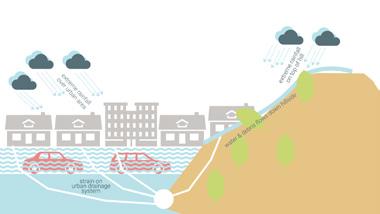







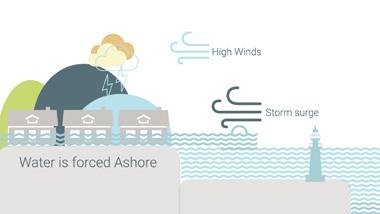

Thorough analyses of natural and built environments, discussions professionals, and explorations of sites lead to the founding of fundamental principles that can inform fresh, fluid designs for the future.
Guiding Principles
1. Rethink Urban Surfaces
2. Create hybrid models of soft & hard infrastructure to manage water flows
3. Re-evaluate above & below ground infrastructure
4. Develop a systems approach to climate change planning in Chicago
5. Achieve a better balance between development & ecological restoration
6. Improve urban health and quality of life through innovative interventions



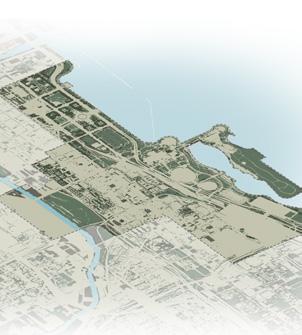

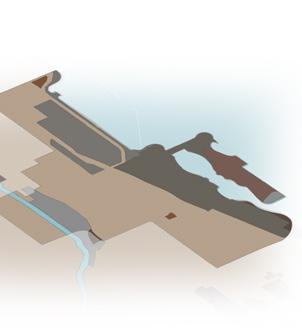

Forever open, clear, and free eternally. Reimagining the iconic landmark to function as part of both Chicago’s urban systems and ecosystems.
While Grant Park has long been a staple of the Chicago lakefront, its entirely artificial surfaces do not offer the benefits that a naturally occurring landscape would provide. Redeveloping the site as a multi-use space that blends infrastructural, environmental, and cultural needs for the present and the future would help to accommodate water, wildlife, and the wider population.




77 is enough. Redeveloping prime land along the Chicago River would improve stormwater capacity for adjacent neighborhoods and communities downstream.
Imagining this site as an area that can transform from vacant land and industrial drab to an ecological environment of water and fauna would do profound good. Introducing wetlands that can soak, store, and filter water while simultaneously preserving historic structures and introducing recreational assets would help to make the area environmentally, economically, and socially sustainable for existing residents and future investors.




Melding the logical with the ecological. Reinterpreting a massive site of inefficient structures to introduce combative, green countermeasures and spaces for culture.
Playing host to the largest convention center in North America, multiple museums, and an immense stadium - the Museum Campus, adjacent Northerly Island, and extensive contextual location, occupy massive swaths of lakeside land while contributing nothing to the success of local ecosystems. Naturalizing these expanses and existing structures, while envisioning new prospects for established systems is vital to reinvigorating the city for centuries to come.
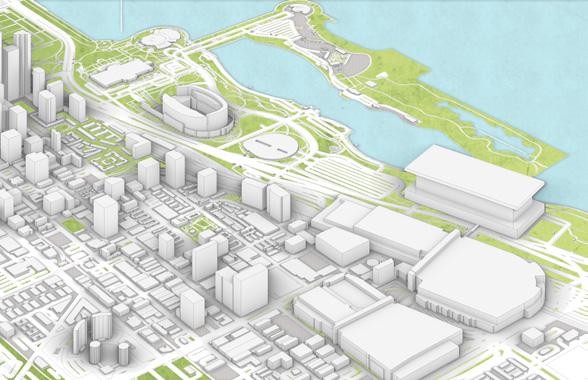
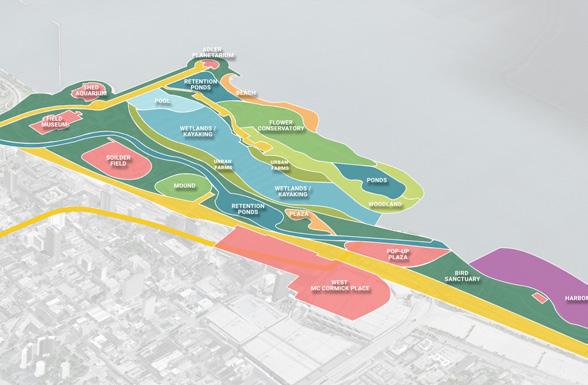

Enabling flow and growth for the future of Chicago.

MCD DIRECTOR
Professor Sanjeev Vidyarthi
INSTRUCTORS
Dr. Sevin Yildiz
Philip Enquist
TEACHING ASSISTANT
Alexandra Pollock
STUDIO MEMBERS
Chuck Klutho
Prayag Bagde
Katanya Raby
Bridget Barnes
Aakash Basantani
Yi Zhou
Rajani Kotaru
Tia Decker
